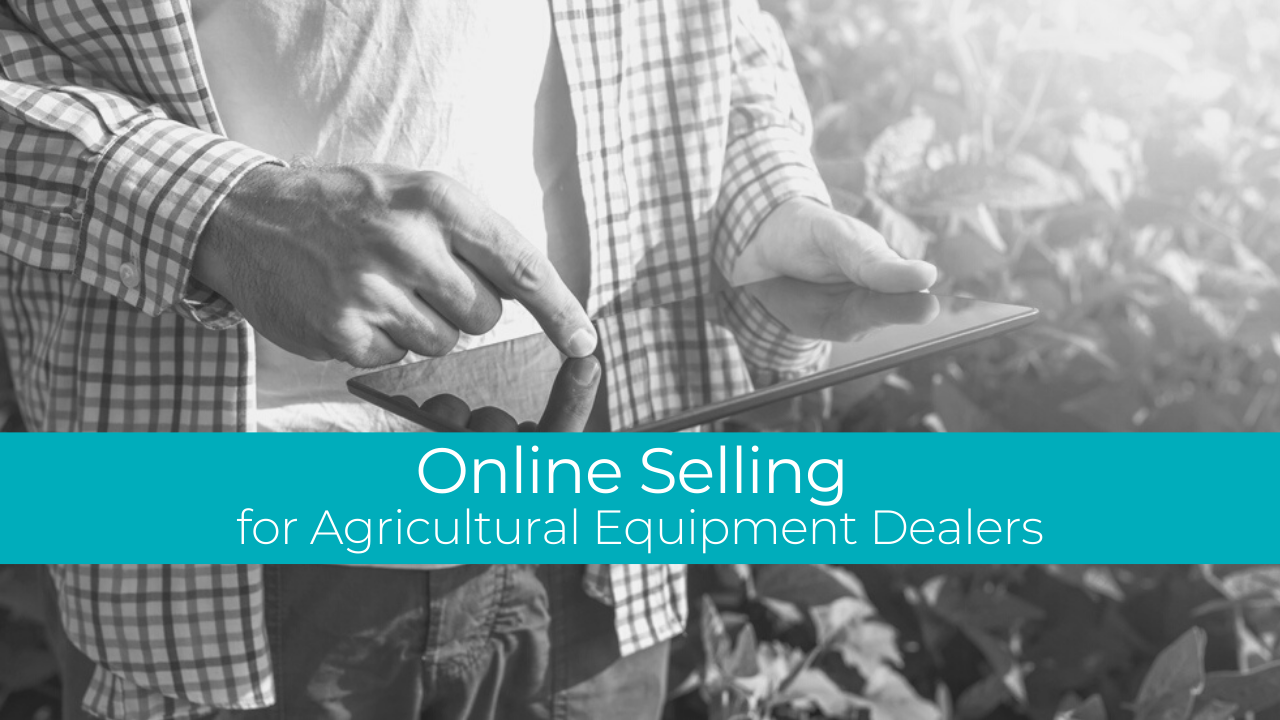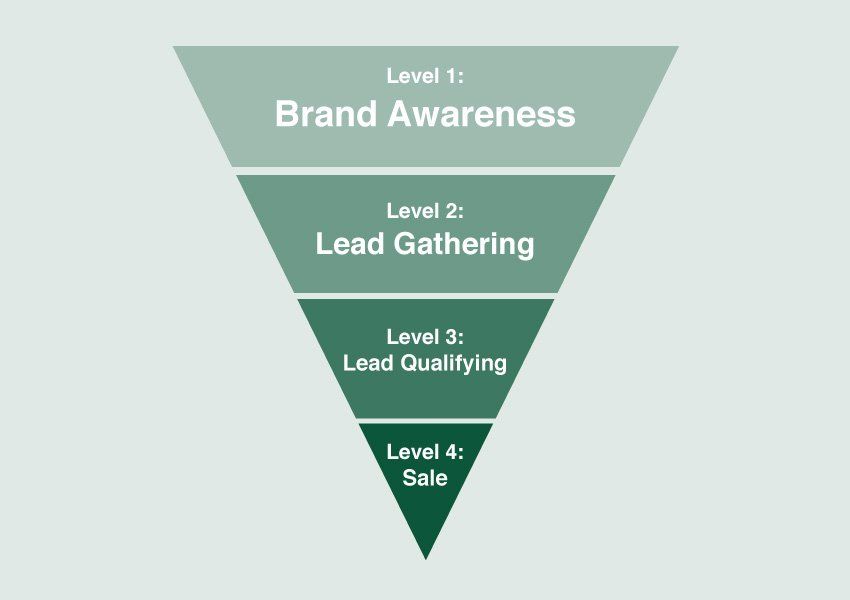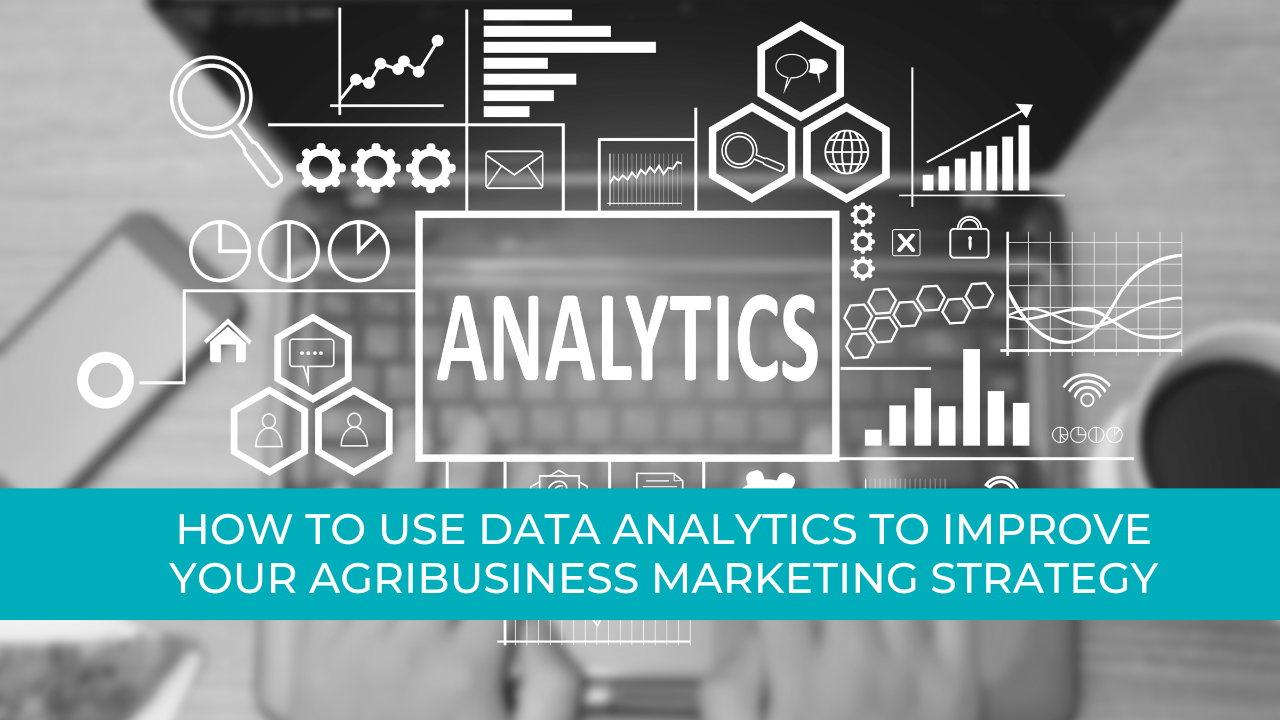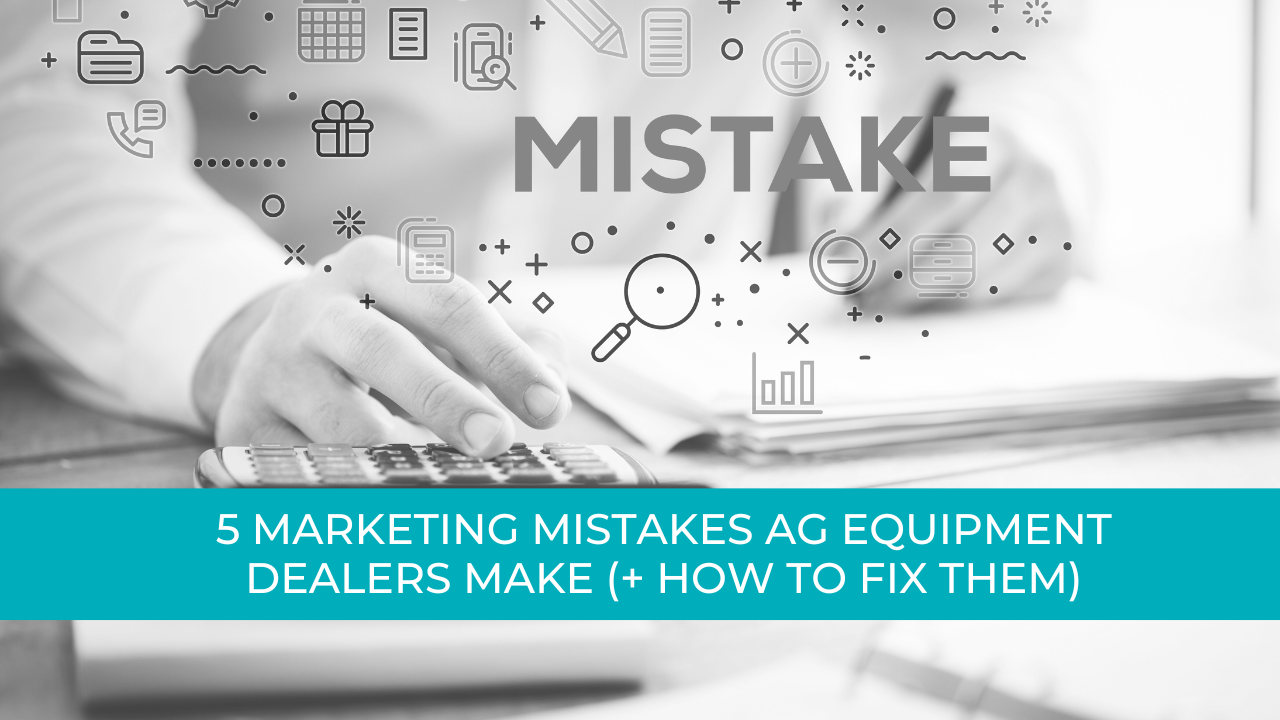Agtivation Blog
What's New In The Digital Ag World
Online Selling for Agricultural Equipment Dealers
Laura Sutherly
Although it can't be compared to the boom years of 2008-14, now is definitely the time to start prepping your sales funnels and online marketing efforts to make hay while the sun shines.

Online sales funnel diagram
According to Farm Equipment’s 2019 Dealer Business Outlook & Trends survey, the large/mid-size ag machinery market saw a mild upturn and the small equipment sales sector maintained its strong growth pattern.
For a lot of equipment dealers, one of their early indicators of a year's numbers is the response to early order discounts from farmers. From this survey, it looks like 2019 is going to be a successful year for farm equipment sales.
So, this all sounds great, but what does it mean for you?
Although it can't be compared to the boom years of 2008-14, now is definitely the time to start prepping your sales funnels and online marketing efforts to make hay while the sun shines.
In this blog, we’re going to cover a few key areas:
Simple steps to selling more on your current website
Setting up sales funnels and how to get prospects’ contact details
Online advertising - where to advertise to get the best ROI
Simple Steps to Selling More on Your Current Website
If you already have a website of your own set up, there are 5 simple and easy improvements you can make today to help you sell more online. (If you haven't got a website yet, you're missing out on a serious revenue stream - let's talk.)
1. Show off your contact details
It might seem an obvious must-have, but the amount of sites that don't show a phone number or email address in an easy-to-see place is scary!
If your customer sees something they want to buy, but can't find your contact details to ask a question/schedule a viewing/hand over their cash - what do you think they'll do? Spend 20 minutes trying to find your details somewhere else or click onto the next guy and call him up?
Put your phone number and email address displayed clearly on the top of every page of your site (the header, which is the section of your site where your logo is).
Remove any obstacles from someone contacting you and buying from you.
2. Use high quality photos - no blurry, out of focus or tiny photos
Bad photos not only make you look unprofessional, they don't do justice to the items you sell.
For every photo on your site, make sure the lighting is good, the resolution is high and everything's in focus.
On your product pages, show photos of each aspect of the item, such as tires, chains, any wear points, paint and its general appearance.
Pay special attention to what's in the background - you don't want anything costing you that sale.
*Extra tip for second-hand sales - a good wash will make up for a lot. Some distributors have reported a 10% increase in their final sales price, just by making sure the equipment looks clean and well maintained.
3. Price
We all know farmers tend to pride themselves in the art of the deal. Ask any farmer what their best deal was and they can tell you exactly how much they paid and who they got it from.
If you're expecting a haggle/negotiation on price, add a little extra onto your online price.
Be sensible when pricing products online though - any farmer worth their salt will be shopping around and checking current auction values. Which also brings us onto point four.
4. Refer to online sources and reviews
If you're selling new products, try and integrate online reviews from your previous customers onto each product page. Don't forget to show off all those great testimonials from previous/current customers throughout your site.
Selling used ag products? Showcase reviews and positive opinion pieces from trusted sites that are well known in the industry.
5. Address common questions and barriers to purchase
No doubt you hear the same questions over and over. Save your time by answering all of those in a FAQ section for each product - break down the usual barriers to buying before they even pick up the phone.
Your website should be your online sales team - taking some of the hard, repetitive work off your plate.
Setting Up Sales Funnels and How to Get Prospects’ Contact Details
Ok, once you've optimized your website for the basics, it's time to think about setting up an online sales funnel.
What's an online sales funnel?
Ok, if you Google this it can come up with a whole mess of complicated funnels and marketing ideas.
For the moment, let’s keep this super simple:
(See diagram at the beggining of this post)
To set up a sales funnel, you want to focus on Level 2: Lead Gathering
A lead is basically a prospect/potential customer who has expressed interest in your company and what you sell.
The most popular and most effective way to gather leads is to set up landing pages (new, dedicated, product-specific pages of your website) and offer something to people in return for their contact details.
This can include a product guide, an online catalogue, a free quote or a discount on their next purchase and is known as a lead magnet.
Level 3: Lead Qualifying is the next step to set up.
When people submit their contact details, its best to put them into an email series.
An email series is a set of pre-written emails that help build up trust and familiarity between your company and the lead that send out automatically.
When you're ready to email on a deal or call them to close the sale, they'll already be fully up to speed with everything and ready to buy (Level 4: Sale). Either that, or you'll know they're not a viable sale.
Level 1 is Brand Awareness, which is essentially your marketing efforts to make people aware of your company.
In terms of your landing page, this would be online advertising to push traffic to your lead magnet.
Once you’ve got all of this set up, you have your online sales funnel. When it's implemented, you'll need to monitor it and tweak it to get the most conversions out of it.
Online Advertising - Where to Advertise to Get the Best ROI
The world of online advertising is so expansive, we can't possible cover it all in this one blog post!
Check out our dedicated blogs on online marketing for the ag sector here 7 of the Best Ways to Advertise Agricultural Products Online.
As with everything ag, preparation is everything.
We’ll show you how to plan now - harvest later, revolutionize your online presence and sell more.
Get planting those seeds today.

In the competitive landscape of farm machinery, your rivals are like shadows lurking just out of sight, waiting for the right moment to seize market share. By harnessing technology for competitive analysis, you can illuminate their strategies and uncover valuable insights. This approach not only sharpens your understanding but also helps you anticipate shifts in the market. What tools can you employ to guarantee you stay one step ahead of the competition?

When it comes to farming, making the right purchases can be overwhelming. Personalized product recommendations simplify this process by providing tailored suggestions that fit your unique needs and farming style. This targeted approach not only saves you time but also boosts your confidence in decision-making. Curious about how customer data plays a vital role in this personalization? Let’s explore the benefits and possibilities that await.

Have you ever wondered how the right tools can transform lead generation for farm equipment? By utilizing a mix of digital marketing strategies, you can enhance your visibility and engage potential customers effectively. From optimizing your website for search engines to harnessing the power of social media, each approach plays a vital role. But what specific tactics can you implement to maximize your success? Let's explore the most effective tools together.

Social media analytics can offer you critical insights for enhancing farm equipment sales. By evaluating audience demographics and engagement levels, you can better understand who’s interacting with your brand. This knowledge helps you craft messages that resonate more effectively. But there's more to explore, especially when it comes to tracking trends and analyzing competitors. What else could these analytics reveal that might just transform your approach to the agricultural market?

When creating farming videos, understanding your audience is essential. You need to take into account who they are, what they want, and how they engage with content. Are they seasoned farmers or newcomers looking for guidance? Identifying these insights can greatly enhance your video's impact. Let's explore how tailoring your approach can lead to stronger connections and better engagement. What strategies will resonate most with your viewers?










